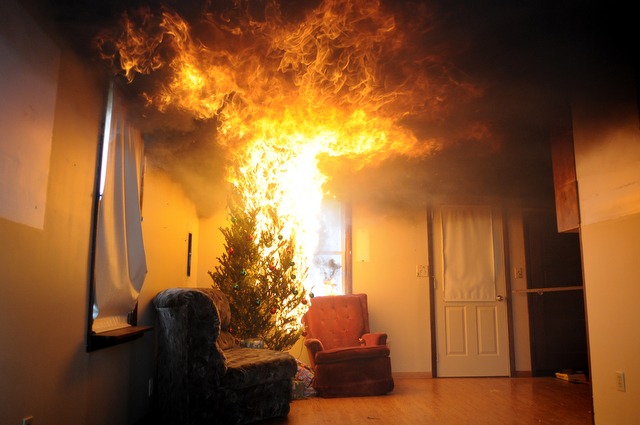 When most people think about the holidays, things like decorations, candles, delicious treats and ornamented trees are what come to mind. What few consider is the fact that these fun-filled winter months are the leading time for home fires according to the National Fire Protection Association (NFPA).
When most people think about the holidays, things like decorations, candles, delicious treats and ornamented trees are what come to mind. What few consider is the fact that these fun-filled winter months are the leading time for home fires according to the National Fire Protection Association (NFPA).
Frequently, people choose to keep Christmas trees up for a few weeks after the holiday. NFPA research shows that nearly 40 percent of homes fires that began with Christmas trees occurred in January.
“The longer they are in the home, the more dangerous they become. The continued use of seasonal lighting and dried-out trees can pose significant fire hazards in and outside the home,” said Lorraine Carli, vice president of Outreach and Advocacy for NFPA. “Proper disposal of the tree from your home will minimize the risk and will keep the holiday a joyful one.”
Although these tree fires are not common, when they do occur, they are more likely to be fatal. On average, one of every 40 reported home structure Christmas tree fires resulted in a death compared to an average of one death per 142 total reported home structure fires.
When it’s time to dispose of the tree, check with your local community to find a recycling program. Do not leave them in the home, garage, or placed outside. For unplugging the electric decorations, use the gripping area provided on the plugs. Never pull the cord to unplug a device from electrical outlets. Doing so can harm the cord’s wire and insulation, which can lead to an electrical fire or shock. To reduce the risk of holiday tree and light fires and to keep decorations in good condition for next year, you should also follow these suggestions:
- As you’re putting away electrical light strings, take time to inspect each for damage. Throw out light sets if they have loose connections, broken sockets or cracked or bare wires.
- Do not place a damaged set of lights back into the storage box for next year’s use.
- Wrap each set of lights and put them in individual plastic bags, or wrap the lights around a piece of cardboard.
- Store electrical decorations in a dry place where they cannot be damaged by water or dampness. Also, keep them away from children and pets.
For more preventative steps to take and simple rules to follow in order to prevent home fires during the holidays and beyond, check out NFPA’s “Project Holiday.”
